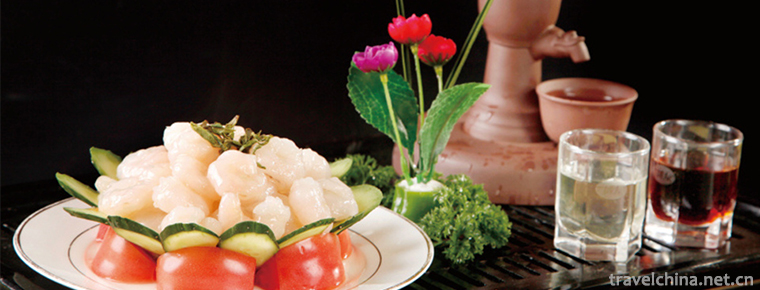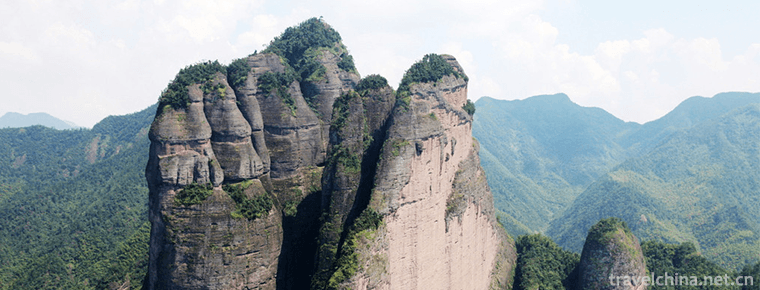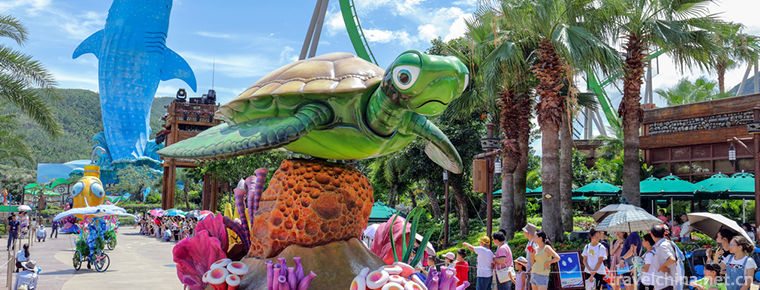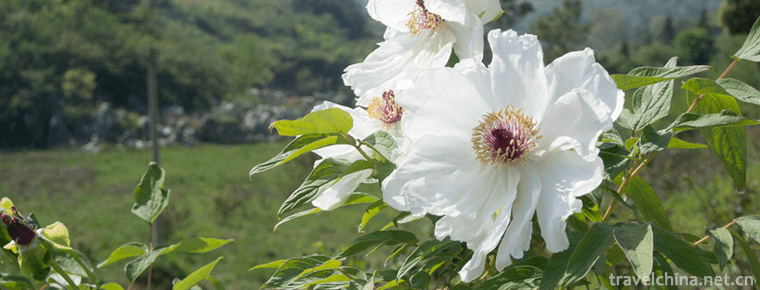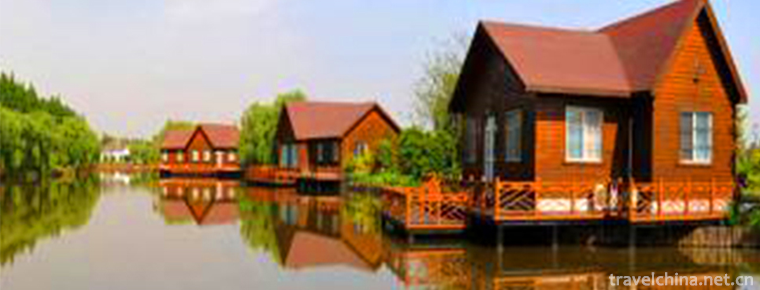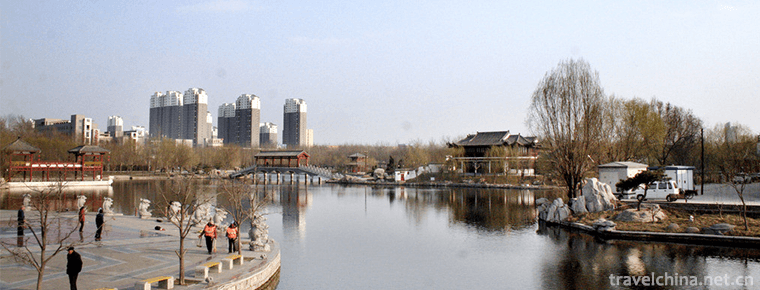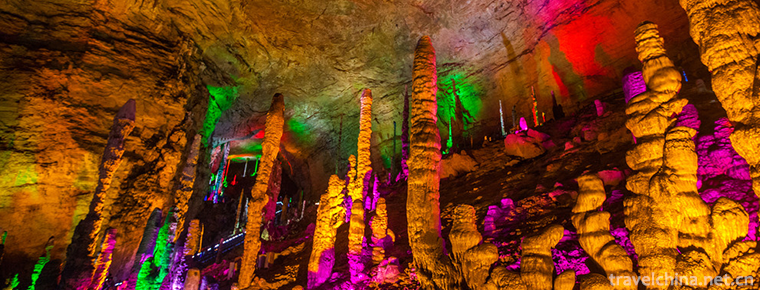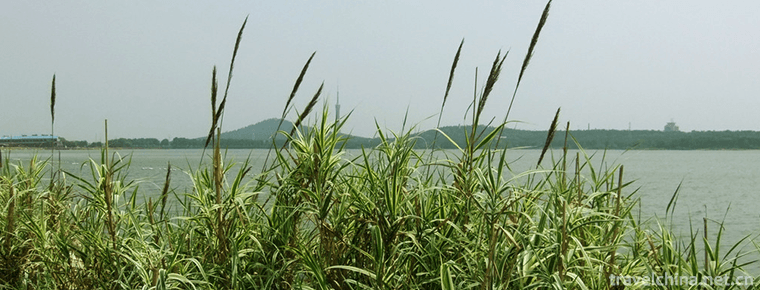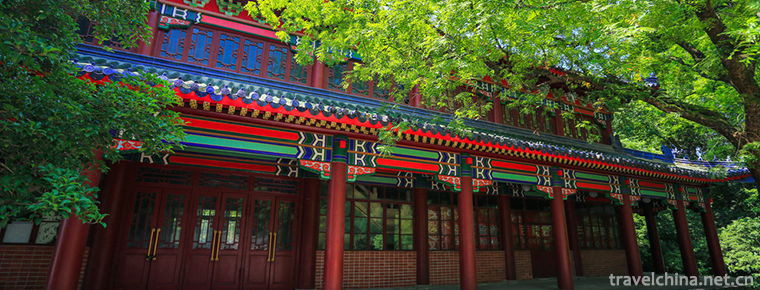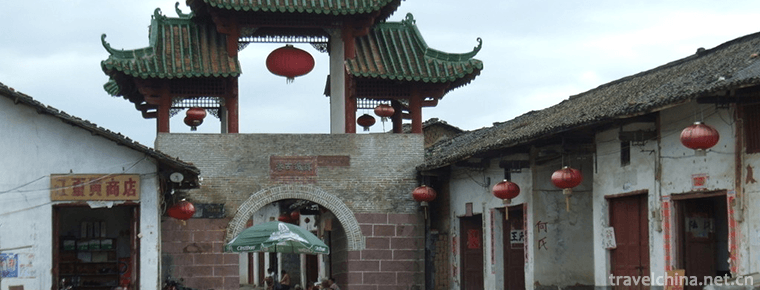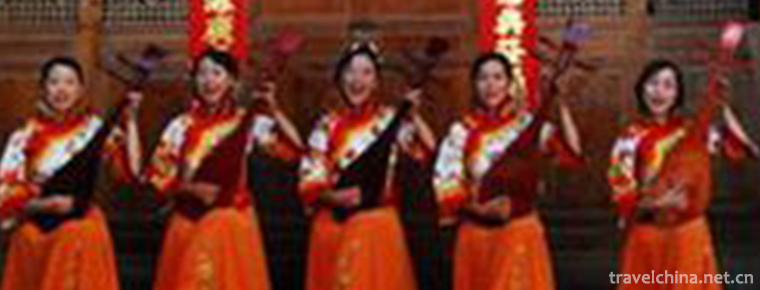Tu Costume
Tu Costume
Women usually wear embroidered small collar and long slant-skinned shirt. The sleeves are made of red, yellow, orange, blue, white, green and black seven-color cloth rings. They are bright and beautiful. It is divided into women's clothing, girls'clothing, young and middle-aged men's clothing and old men's clothing.
On June 7, 2008, the Tu costumes were approved by the State Council to be included in the second batch of national intangible cultural heritage lists.
Costume features
Female clothing
Women's clothing
Commonly known as seven-color sleeves, the Turkish language is called Xiusu, meaning "flower sleeve shirt". It is the symbol of Tu women's clothing. From the bottom, the first is black, symbolizing the land; the second green, symbolizing the green seedlings and grass; the third yellow, symbolizing the wheat stack; the fourth white, symbolizing the dew; the fifth blue, symbolizing the blue sky; the sixth orange, symbolizing the golden light; the seventh red, symbolizing the sun. Flower-sleeved gown with black, purple-red or laced blue shoulder, white-brown or blue-green belt waist, with flowers, birds, insects, butterflies, clouds embroidery or twisted patterns. There are Luo Zang and money purses on the belt. Luo Zang is made of copper and silver sheets. It has animal head, round, peach-shaped and other patterns. It has holes on it. It is commonly used to tie flower towels, bells, needles and other objects, hanging on the left side of the belt. Qianpiao is usually a small bag one foot five inches long and four inches wide, with embroidery or wire pattern ornaments at both ends. Women's Qianpiao is made of three white-bottom embroidery strips sewed together, with three colored thread spikes at the bottom. Used for purses and decorations. Wear pleated skirts or pants. There are red pleated skirts with white edges, two left and right skirts, like two red wings of butterflies; under the knees of pants, there is a blue or Black Trouser barrel, which is called "Tie Bend" in Turkish.
Girl's Dress
Unmarried girls are accustomed to combing small braids with two sideburns and one braid in the middle. Three braids are tied together behind their backs. They are tied with a red-headed rope to tie a conch round piece. The forehead band on the girl's forehead is called "hoop". It is made of white cloth embroidery. It is two inches wide and two ears long. There are several short ears of coloured thread and several small bells along the upper edge. Some girls wear an embroidered headscarf. Its trouser legs are covered with a foot-long red "post-bend", which is connected with the trouser legs with white cloth strips under the knees to make their longitude and latitude distinct. The difference of hairstyle, colour and forehead band is often the symbol of differentiating married or unmarried women.
decorate
When Tu women like to wear eardrops, celebrate festivals or visit relatives and friends, they also hang a pair of "face ancient Sugars" in their eardrops, that is, silver eardrops, such as the size of copper coins, peach-shaped, with piercing patterns on the front. When wearing, he connected the two "Mian Gu Sugars" with a number of pearls and hung them on his forehead band. The neck collar worn by Tu women is called "Sol". It is made of Achnatherum splendens, covered with red cloth, and encased with about 20 pieces of round conch, the size of copper coin.
Turkish women pay attention to headwear. In Turkish, headwear is called "twist" and its style is complex and different from place to place. Some are called "trident", "dry grain", "sheep's chamber", "saddle sled" and so on. A variety of headwear has been used by few people and become simple and convenient. Girls usually comb three hair braids. Married people comb two hair braids. The ends are connected, decorated with coral and turquoise, and then wear brocade felt caps. They are very beautiful and beautiful.
Tu women's gold, silver and copper earrings are mostly engraved with patterns or inlaid with red coral and emerald, with five-coloured beads hanging underneath and spikes hanging on them. Among them, the most exquisite one is the "top seven bottom nine" or "top five bottom seven" Tremella pendant. The earrings are connected by a series of five-color ceramic beads, which hang long on the chest like several necklaces.
A collar for a horse
Xishan and Xigou areas of Huzhu Tu Autonomous County are the most concentrated areas of the Tu people in Qinghai Province. Among the Tu women's clothes in this area, the Tu necklace is one of the necessary decorations. There is also a moving legend about the origin of the Tu collar. Legend has it that in ancient times, there lived a couple of brothers on the beach of Sorb under the Longwang Mountain. Their brother's name was Mori and their brother's name was Nida. At the same time, they fell in love with the beautiful girl La Yuehua. Later, the greedy Mori drank the poisonous saliva of the dragon in the East China Sea and became a python, while Nida became a stone man. In order to punish the Python and rescue Nida, Layuehua not only invented the Anzhao dance with her sisters, but also hung a chain around the python's neck, which is the prototype of the Tu necklace.
According to Mr. Bao Guangyuan, a scholar who has been studying the Tu culture for many years, the Tu necklace is usually made of hard cloth and metal pieces. The most primitive necklace is also inlaid with shells and bones. Because Tuguhun's ancestors are Xianbei people from Eastern Liaoning. They have the habit and condition of using shells. They can be seen as Tuguhun's legacy by embedding shells on their collars.
Rainbow Sleeve: A Sign of Nature Worship
Rainbow sleeve is one of the most typical symbols of Huzhu Tu traditional costumes, and Huzhu County has won the reputation of "Rainbow Town". In Mutual Assistance, there is a popular saying that the Tu Aunt put on her rainbow sleeve: "Walk up and swing three times, bees and butterflies can not drive away; Flip the sleeves and dance in peace, just like the rainbow coming down." This is undoubtedly the most poetic chant and praise of Rainbow Sleeve. Rainbow sleeve, commonly known as flower sleeve, is a kind of sleeve sewn with seven colors of red, yellow, blue, white, black, purple and green cloth.
Men's clothing
Young men's clothing
Young and middle-aged men usually wear red caps and "eagle-beaked" felt caps. The red cap is a kind of brocade-rimmed cylindrical felt cap, which is a free translation of the Turkish language "Gala Moliga". Legend has it that the hat of the Qing Dynasty evolved. Because the red top is connected with a bunch of red cocoons about five inches long, so it is named. "Eagle-beak pecking" felt hat, the style of the hat is that the rear eaves turn upward and the front eaves unfold forward. The dress is a long sweater with a small collar and slant placket, with black edges at the cuffs and a four-inch square color pattern on the chest. There are white jackets with embroidered collars about three inches high, and lambskin on the collar when it's cold. Black or purple shoulder jacket, buttons are made of copper. The waistband is a twelve-foot-long narrow blue or black cloth with five-inch long embroidered joints with floral thread patterns at both ends. Wear blue or black crotch pants, wear embroidered white trousers and flower girdles, tie legs with "Black Tiger Down Mountain" leggings, put the black side on top when tied legs, so it is called "Black Tiger Down Mountain". This is also a token of love for young men and women, symbolizing loyalty, wearing white socks or black socks, shoes for a pair of corrugated shoes and Fugai floor shoes.
Older men's clothing
Older men wear hats more often. In winter, wearing leather caps, i.e. sewing wool blue cloth into a trumpet mouth, and sewing lamb skin inside the trumpet mouth, can be turned over or put down. The top of the hat has a red-green line top with a big walnut. Wear a long gown with a small collar, a black shoulder jacket, a black belt and white socks and black shoes.
When it snows in winter, men usually wear large-collar white-board leather jackets with four-inch wide edges at the neckline, large-breasted and hem cuffs. Wear a brown jacket with a small round collar and a large breast, along the edge of blue and black cloth. The Brown is woven from white or variegated wool twists. Rich men often wear silk gowns, Satin Vest with large breasts and horsewear. The Tu men in Sanchuan area of Minhe County wear the same clothes as the Han people. The Tu men's clothing in Wutun, Tongren County is the same as that in Tibet.
Current situation of inheritance
Today's Tu costumes have changed greatly with the progress of the times. Some of them have disappeared and some of them have been renovated and rejuvenated. As in the old embroidered high collar, it has now become a double-purpose collar; the long headscarf "Twist Dahl Show Towel" covered in "Twist Dahl" (headdress) has become a short headscarf used by girls today. The majority of Tu youth not only like to wear their own national costumes, but also love fashion. They either make the Tu costumes fashionable, or make the fashion Tu costumes fashionable, thus enriching the Tu costume culture.
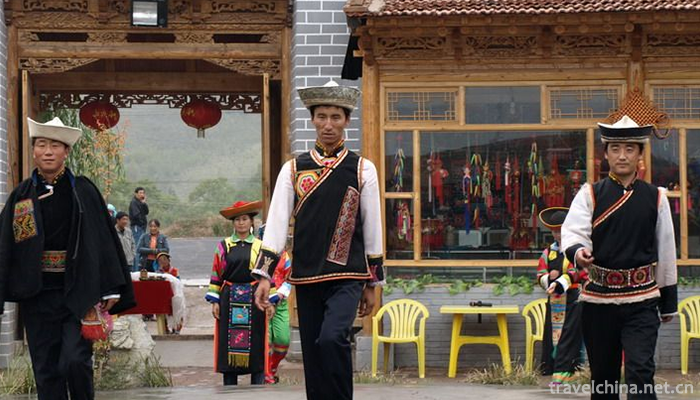
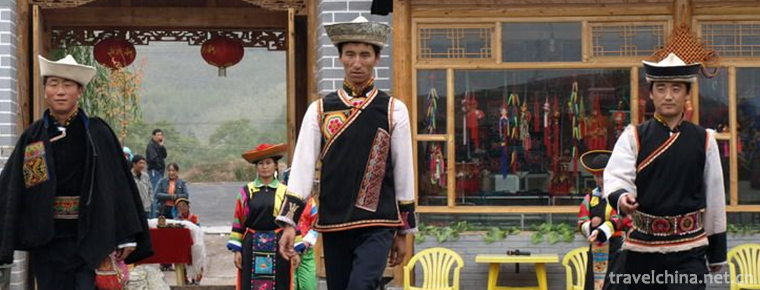
Tu Costume
-
Stirfried Shrimps with Longjing Tea Leaves
Lobwell shrimp is a famous Hangzhou dish with a strong local flavor. It is made of lobwell tea and shrimp before and after the Qingming Festival.
Views: 212 Time 2018-10-27 -
Jiang Lang Shan
Jianglangshan, formerly known as Yulangshan and Jinchunshan, is located in Shimen Town, Jiangshan City, Quzhou City, Zhejiang Province
Views: 220 Time 2018-12-07 -
Guangzhou Changlong Tourist Resort
Views: 151 Time 2018-12-12 -
Yashan Huahai Stone Forest
Yashan Huahai Stone Forest Tourist Area, located in Nanling County, Wuhu City, Anhui Province, is one of the important scenic spots in Anhui's "two mountains and one lake" tourism economic c
Views: 177 Time 2018-12-20 -
Qianwei ecological village
Qianwei Village is located in the middle of Chongming Island, 23 kilometers away from Nanmen Port, close to Dongping Forest Park. Once a desolate and silent village, now it has both urban scenery and
Views: 309 Time 2018-12-26 -
Dong Ziyuan Scenic Area
Dong Ziyuan Scenic Area belongs to Dezhou Economic Development Zone. Dezhou Economic Development Zone, as a provincial economic development zone approved by Shandong Provincial People's
Views: 332 Time 2019-01-08 -
The Yellow Dragon Cave huanglong Cave
Located in Wulingyuan Scenic Area, the core scenic spot of Zhangjiajie City, Hunan Province, Huanglong Cave is an integral part of the World Natural Heritage Site and Zhangjiajie World Geopark
Views: 262 Time 2019-01-18 -
Longzi Lake Scenic Area
Longzihu Scenic Area, located in Longzihu District of Bengbu City, Anhui Province, is a national AAAA-level tourist attraction, a national ecological demonstration area and a provincial-level scenic s
Views: 176 Time 2019-02-06 -
Ming Xiaoling Mausoleum
The Ming Xiaoling Tomb is situated at the south foot of Zijinshan Mountain in Xuanwu District, Nanjing, under Dulongfu Playing Pearl Peak. It is adjacent to Zhongshan Tomb in the East
Views: 185 Time 2019-02-07 -
Pearl Lane
Zhuji Lane, located in Zhuji Village, Zhuji Town, Nanxiong City, Guangdong Province, covers an area of about 3 square kilometers. Zhuji Ancient Lane is one of the national 4A scenic spots and one of t
Views: 264 Time 2019-03-20 -
Nanping Opera
Nanping Opera is a folk art popular in the area of Jiuzhaigou County (former Nanping County) on the Northwest Plateau of Sichuan Province. It was once called "Nanping Pipa Playing and Singing&quo
Views: 313 Time 2019-06-07 -
Nanchong mineral resources
Nanchong mainly has rock salt, oil and natural gas, placer gold, ferrotitanium, uranium, phosphorus and other mineral resources. Nanchong is located in the core of Nanchong rock basin, the largest rock salt sedimentary basin in Sichuan Province. Underground
Views: 350 Time 2020-12-17
